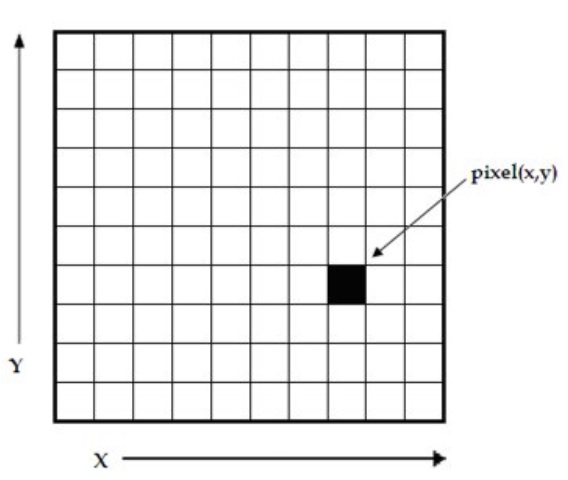Relationship Between Pixels
Digital image is a finite collection of discrete samples (pixels) of any observable object. The pixels represent a two- or higher dimensional “view” of the object, each pixel having its own discrete value in a finite range. The pixel values may represent the amount of visible light, infra red light, absortation of x-rays, electrons, or any other measurable value such as ultrasound wave impulses. The image does not need to have any visual sense; it is sufficient that the samples form a two-dimensional spatial structure that may be illustrated as an image. The images may be obtained by a digital camera, scanner, electron microscope, ultrasound stethoscope, or any other optical or non-optical sensor.
PIXEL
In digital imaging, a pixel (picture element) is the smallest piece of information in an image. Pixels are normally arranged in a regular 2-dimensional grid, and are often represented using dots or squares. Each pixel is a sample of an original image, where more samples typically provide a more accurate representation of the original. The intensity of each pixel is variable; in color systems, each pixel has typically three or four components such as red, green, and blue, or cyan, magenta, yellow, and black.
-
Pixel is a smallest component of digital image.
-
Pixel is a color point of digital image.
-
An image should be comprised of many Pixels.

Resolution
Resolution refers to the number of pixels (picture elements) that make up an image. The resolution of an image is typically expressed as the number of pixels in the width and height of the image, and is usually represented in the format "width x height". For example, a 1920 x 1080 image has a resolution of 1920 pixels wide by 1080 pixels high.
The resolution of an image determines its level of detail and clarity. Higher resolution images have more pixels and therefore can display more detail than lower resolution images. However, higher resolution images also tend to have larger file sizes, which can make them more difficult to work with or store. The appropriate resolution for an image depends on its intended use, as well as the capabilities of the device or medium that will display or print the image.